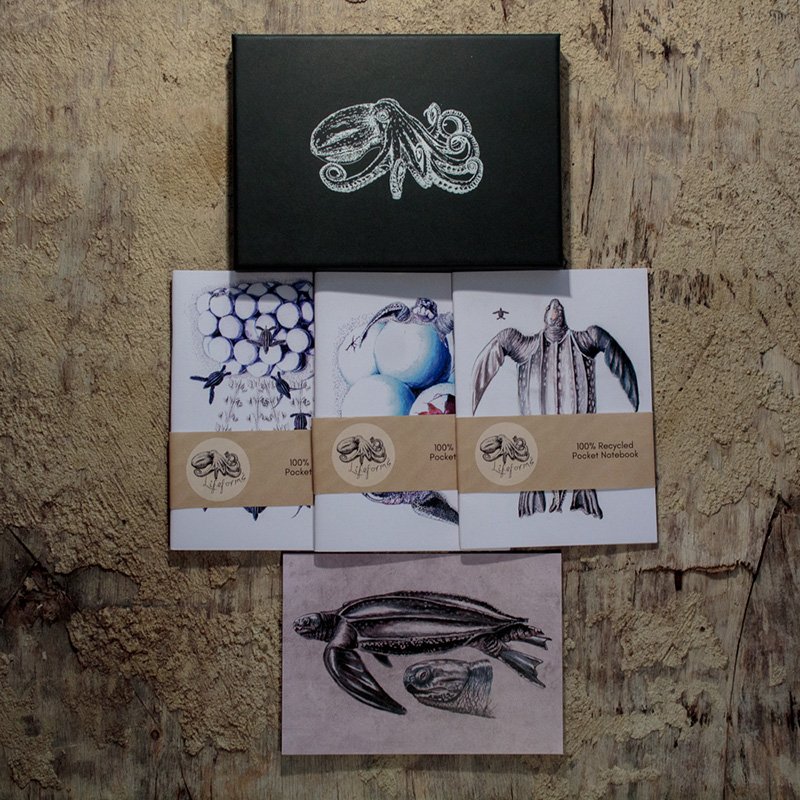Leatherback turtle (Dermochelys coriacea)
The leatherback turtle is also known as the leathery turtle or Luth. It is one of the most threatened species to be found in British waters.
Can you see leatherback turtles off the British coast?
Although it cannot breed on our chilly beaches, the leatherback turtle migrates thousands of miles to our food rich sea to fatten up. These turtles are increasingly spending time around the coast of Britain. This is because of the warming water temperatures and the large numbers of jellyfish they prey on. Measuring over 2 metres long as an adult the leatherback is the largest turtle. It’s also one of the largest, heaviest reptiles and the only one capable of internal temperature regulation. It is a powerful swimmer capable of swimming 30 kilometres a day for many days. It can dive 1000 kilometres in depth, where temperatures are in single figures (celcius) even in tropical waters.
Leatherback turtles endangered
The leatherback is an ancient species and sole member of its family. It looks quite unlike other turtles, or any other animal! Its shell is made up of thousands of tiny plates strengthened and streamlined into ridges and covered with skin. There are possibly less than 40,000 left in the World, with ever growing pressures on water-borne individuals and the all too scattered nest sites.
Females produce around 80 eggs which they bury in the night high on beaches. The eggs are vulnerable to thieves and predators. The 6.5 centimetre long baby turtles, also known as hatchlings, are lucky to make it from the nest to the water and luckier still to survive one year. They probably have to survive over 30 more years before they are mature but are thought to live many decades longer than that. As they grow they inevitably become tougher and faster but still face the worst threat of all.
Turtles and Plastic Pollution
Feeding almost entirely on jellyfish turtles mistake floating plastic for food. In many cases, maybe all, the result is death as the throat is not built for coughing the bags back up. A discarded bag or a balloon released far inland can make its way by wind or river to the sea, (most do eventually as all water and soil and wind is headed that way) and inevitably they fall into the paths of turtles. A plastic wrapper today could kill a turtle 200 years from now on the other side of the world from where it began.
What can you do to save the leatherback turtle?
You can help save this species from extinction. Stop using plastics if you haven’t already, especially single use plastic. If you think ahead and take a reusable bag with you, you could save the life of a turtle. It’s as simple as that! Also buy ethically, especially seafoods (turtles are often caught by mistake) Donate to marine conservation charities wherever possible and spread, spread , spread the word. Our turtle notebooks are a good way of spreading awareness. They have information about the life of the Leatherback turtle on the back. Also wear your Leatherback turtle t-shirt with pride! Make it a talking point to make people aware of the plight of this magnificent creature. If you persuade at least one person to reconsider their use of single use plastic – you could save the life of a turtle!
The world’s largest known turtle washed up at Harlech in Wales in 1988. The specimen illustrated was found on the beach near Abersoch in 1978. It weighed nearly 350kg.and measured 205.74 cm. from nose to tail.




